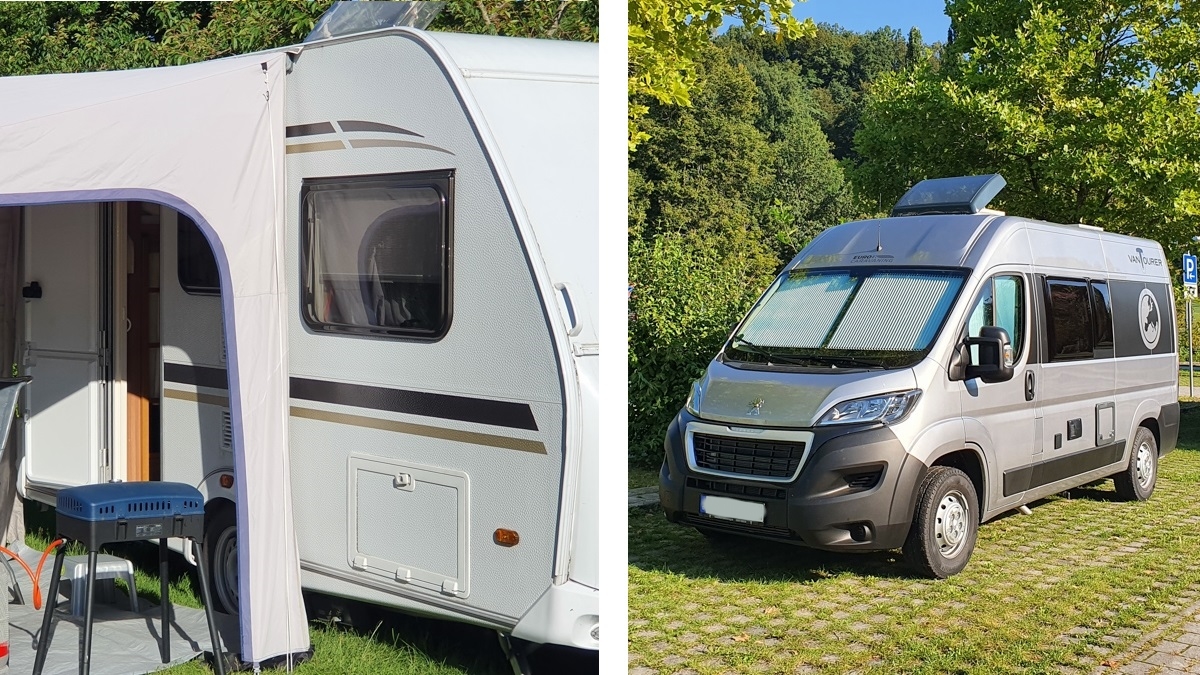Getting around in Europe
You are thinking about traveling but still having your own home with you? And you know it shouldn’t be a tent? Then you typically end up with the decision between a caravan or a camper van. I use both for traveling which means I can share some insights on where the differences are for me. It really depends on your specific situation which of the vehicles might be better for you.
My experiences (until now) are based on the traveling I did in Europe. I assume some of the situations will be different on other continents.
On your way
| Caravan | Camper Van/Mobile Home |
|---|---|
| Speed limits are typically lower compared to those of cars. You can also assume that every additional km/h costs a disproportionately large amount of fuel. As a caravan driver, you are prohibited from passing in the vast majority of cases on construction sites. Also there might be sections in which passing is generally forbidden and you can get stuck behind slow trucks for a very long time (e.g. 300 km in case of the Brenner highway in Italy). Some mountain passes are not allowed for caravans which might mean long detours. | If your camper van is below 3.5 t, you would drive it like a car, just a slightly larger car. Beyond 3.5t it will be more like driving a truck and you will also face more restrictions with regards to speed, etc. Pay attention to the width restriction on construction sites, which applies including the exterior mirrors! Attention: your registration papers often state the width without the exterior mirror! |
| Even with a small caravan, you can travel quickly with a length of 10 meters. Pulling over to the right for a moment is not that easy. In addition, maneuvering is much more difficult, i.e. driving backwards a bit to get better into a gap is not that much fun. With a caravan you are often explicitly on parking lots. On busy motorways and on weekends, the parking spaces designated for caravans are often occupied by trucks, so that although you have your freedom at the back of the hook, you hardly get the opportunity to use them briefly during your trip. | Unless you drive one of those really big ones and you are not in the middle of a busy town you usually find a parking spot. |
| Once you parked the caravan on a campsite you have a separate car available to drive around the area of your final destination. You can drive into small, narrow places, use underground garages, every supermarket parking lot and you can also park where height restrictions prohibit vehicles larger than 2m from entering. | Depending on the size of your camper van you might no longer be very mobile once you reached your destination, but have to explore the area by bike or scooter. Even with small motorhomes, 2.30 meters wide or 6 meters long, you are quickly too big for normal parking spaces and too high for many parking garages and parking lots. Especially in Southern Europe streets can get very narrow. Height restrictions are also very common for parking lots in touristic areas. A lot of parking lots in cities are also explicitly only allowed for cars and even if your camper van is small you might risk a fine. |
In general typical routes for a caravan could look like this: Either you go mostly straight to your destination, put your caravan there, and move around by car there. Or you have a couple of destinations and you explore the surroundings from those. | In general a typical route for a camper van could look like this: As you don’t have a separate vehicle (unless you do long bike rides or have a scooter) the camper van will follow you wherever you go. |
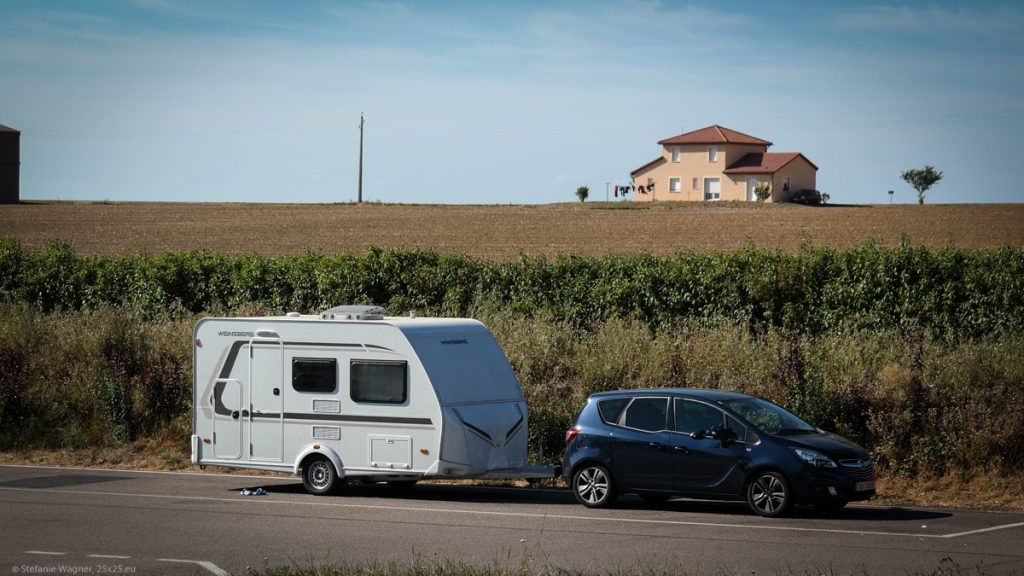
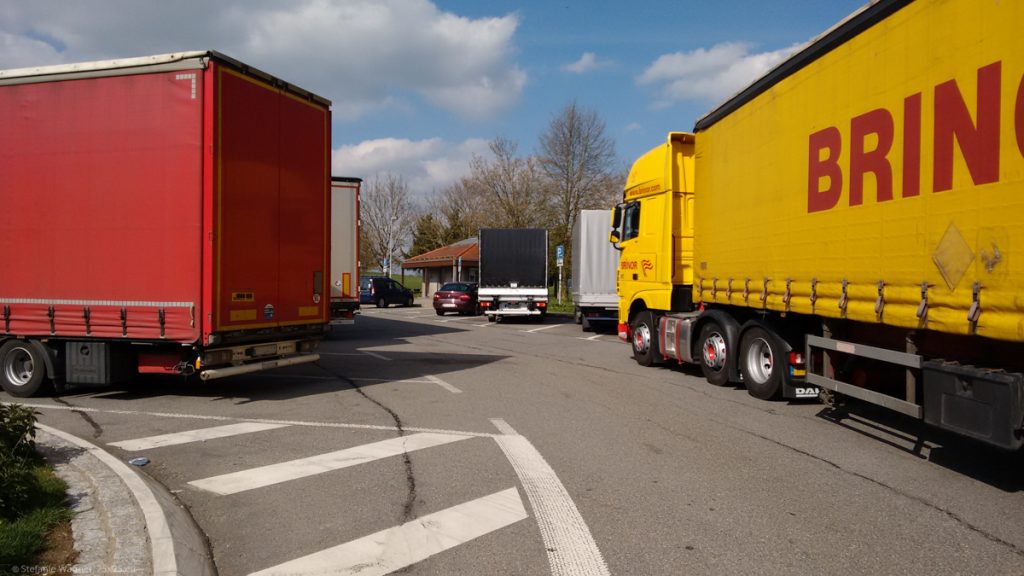
At your destination
| Caravan | Camper Van/Mobile Home |
|---|---|
| Typically you have to go to a campsite. And a campsite feels a bit like a hotel. The reception is often closed at lunchtime. Late in the evening too. Normally you are allowed to use your spot starting in the afternoon and you need to leave until noon (yes, just like in hotels). Going on an excursion during the day and leaving the campsite in the evening is not possible without paying a full extra day or at least an additional cost, depending on the space. As camping has become very popular many nice campsites are fully booked months before already. Which means if you have a dedicated area you would like to go to you might need to plan even more in advance than when staying in a hotel. | There are many designated RV sites. More and more are also being opened in attractive locations, e.g. near sights or leisure facilities. With a bit of planning, you can use the day for excursions and drive to your next station in the evening. However, this might not be true during the season where RV sites get very crowded and you would need to arrive early to get a spot. Whether you can relax there, however, depends very much on the space. Often these are reallocated parking areas with the corresponding parking lot charm. If you think about camping outside of a designated area, just being “wild and free” – make sure you check the local rules. In a lot of countries and a lot of areas this is unfortunately illegal and it gets more and more prosecuted especially during high season. |
| Because your car is separate from your “home” you can just leave all your stuff as it is when you are out for shopping or sightseeing. No need to get everything stored again. | Even for short drives you need to prepare everything almost as if you would be going for the next long stage. Store the small things safely, remove anything that you have outside on your vehicle. |
| Because your car is separate from your “home” one part of the group can go by car while the other one stays with the caravan and both are having fun. | If you want to go somewhere and others of your fellow travelers don’t it gets difficult. You would drive off with everything they might want to use during the day as well. Therefore, you need to be aligned on your plans. |
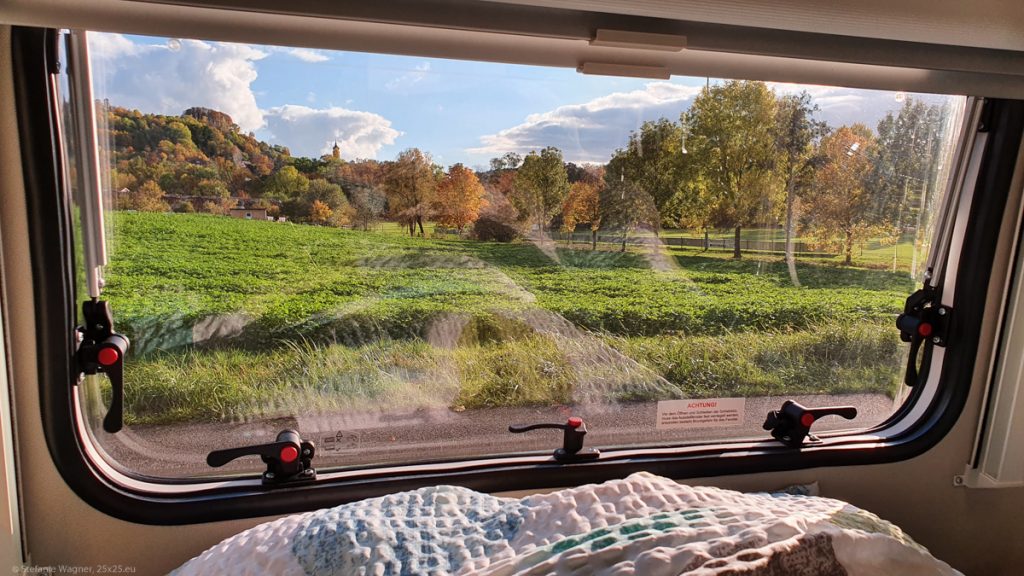
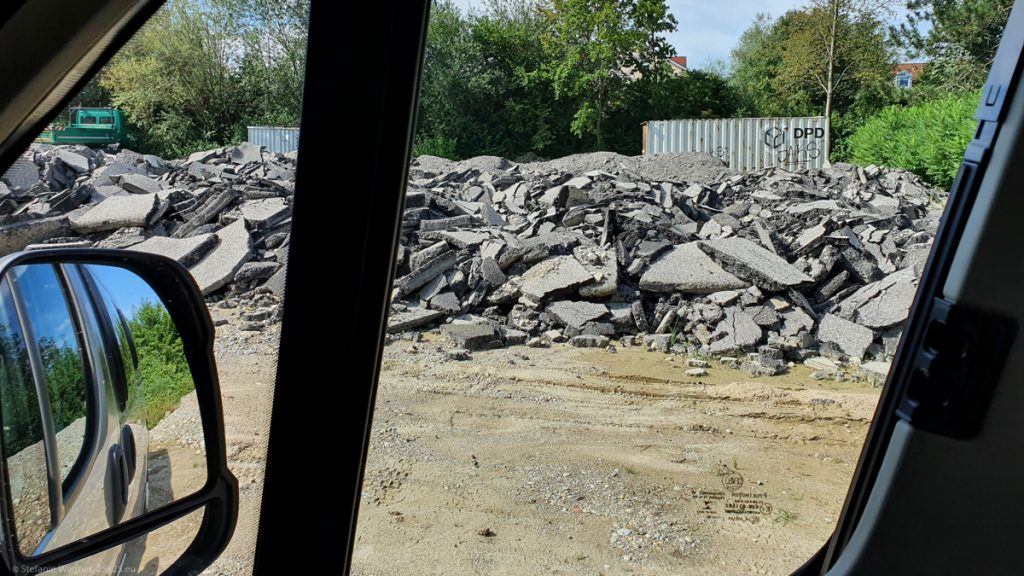
While my kids were young the caravan was the perfect fit for us. We usually just went to some dedicated areas. booking very well in advance was ok for me, the kids could make friends on the campsite, I could do some sightseeing while they could stay with others and wouldn’t be bored, we could use the car without the need to pack all the stuff (e.g. chairs, table, awning).
When traveling solo it depends on the type of travel. Sometimes it is nice to have your home in one spot and roam around from there. Sometimes I want to change my location almost every day or go to areas where there are not campsites. Then a camper van is the better solution.
Costs
| Caravan | Camper Van/Motor Home |
|---|---|
| You really only buy your living area and not an extra car. The acquisition costs. In addition, a caravan is very stable in value. | It’s like a car. The tires touch the public road and you have the first significant loss of value. The value might be more stable than the one of a normal car though. New legal restrictions might prevent you from driving in certain areas (e.g. based on pollutant class or fuel type) which might lead to a significant drop in value. |
| The maintenance costs are very low as there are few wearing parts. Tax and insurance are not based on engine size or pollutant classes. | The cost of running a camper van is like that of a car, a very large car. You are practically buying an expensive second car that might just sit around for most of the year (depending on your use case). |
| As you need campsites most of the time your overnight stay is not for free. Depending on the area you are heading to it can be quite costly (though usually a lot cheaper than hotels in that area). | You can use free or cheap(er) RV sites or (depending on the area) just stay anywhere for free. |

Unless you can use your camper van as your everyday car or you buy a rather old used one let’s be honest: it is a costly way of traveling. You can go into a lot of very nice hotels and restaurants for the amount of money you need to pay for a new(ish) camper van. If you are a family with a trailer you might be able to save money in the long run when you are going on vacation regularly.
Miscellaneous
| Caravan | Camper Van/Motor Home |
|---|---|
| In its basic version, a caravan is provided for the campsite and thus the connection to shore power, available water tap nearby and sewage. The fresh water and waste water tanks are usually much smaller than those in camper vans. A battery can, however, be retrofitted so that the caravan can also be self-sufficient. | Camper vans are already provided for self-sufficient operation ex works. You already have a battery, an additional one can often be added. The water tanks are designed so that you can easily cover several days without supply. |
| As your caravan will be mostly stationary you can add a stable awning to extend your “living room”. Therefore, it offers protection against sun and rain. If properly secured normal to heavy wind is not a problem. | You might have marquee that you can quickly move out and in. However, wind can harm it rather easily. Without additional shields it will not offer protection against a low sun or rain on a windy day. |
| Since the caravan is mostly on campsites, the likelihood of break-ins is lower because there is often an attentive neighbor who would take a look for you. Of course, “less” does not mean that it does not occur at all. | With every purchase and every visit, the camper van and all its contents will come with you and, if necessary, be parked in normal parking spaces, with the corresponding risk of theft. |
| The image of a caravan is still rather old-fashioned. Many think of permanent campers and congested highways. Instagram will typically give you “van life” and not “caravan life” as a hip lifestyle. | The image of the camper van is cool and promises freedom. |
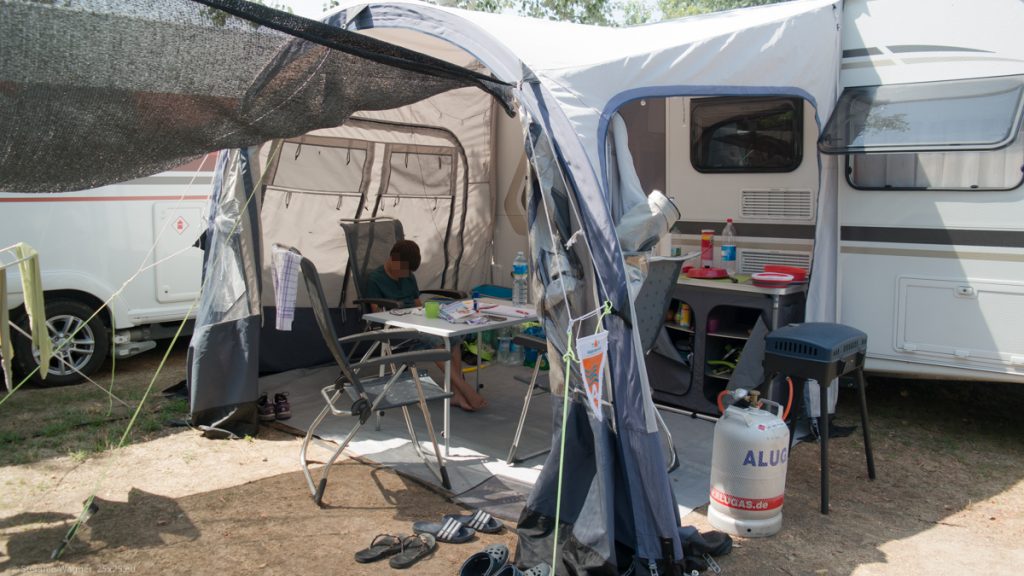
Even though I never thought I would become a camper it has been one of the best experiences of my life. I wouldn’t want to miss it. If you have the chance to try it out: do it. Rent a caravan or a camper van and give it a try.

